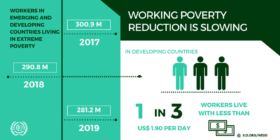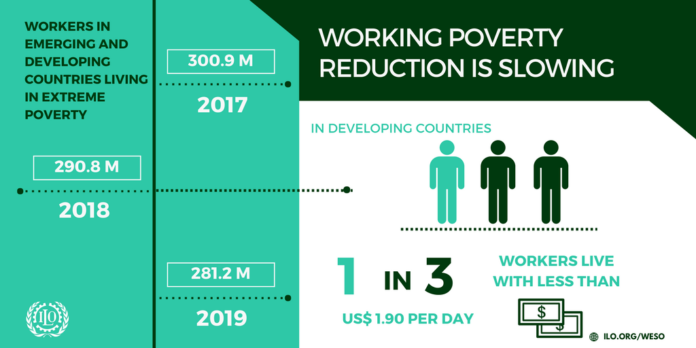GENEVA, 24 JANUARY– Almost half a billion people are working fewer paid hours than they would like or lack adequate access to paid work, according to a new International Labour Organisation report (ILO). In addition, the World Employment and Social Outlook: Trends 2020 (WESO) shows that unemployment is projected to increase by around 2.5 million in 2020. Global unemployment has been roughly stable for the last nine years but slowing global economic growth means that, as the global labour force increases, not enough new jobs are being generated to absorb new entrants to the labour market.
”For millions of ordinary people, it’s increasingly difficult to build better lives through work – said ILO Director-General Guy Ryder – Persisting and substantial work-related inequalities and exclusion are preventing them from finding decent work and better futures. That’s an extremely serious finding that has profound and worrying implications for social cohesion”.
The WESO shows that the mismatch between labour supply and demand extends beyond unemployment into broader labour underutilization. In addition to the global number of unemployed (188 million), 165 million people don’t have enough paid work and 120 million have either given up actively searching for work or otherwise lack access to the labour market. In total, more than 470 million people worldwide are affected. It also looks at labour market inequalities. Using new data and estimates it shows that, at the global level, income inequality is higher than previously thought, especially in developing countries.
Worldwide, the share of national income going to labour (rather than to other factors of production) declined substantially between 2004 and 2017, from 54 per cent to 51 per cent, with this economically significant fall being most pronounced in Europe, Central Asia and the Americas. This is more than suggested by previous estimates, the WESO shows. Moderate or extreme working poverty is expected to edge up in 2020-21 in developing countries, increasing the obstacles to achieving Sustainable Development Goal 1 on eradicating poverty everywhere by 2030. Currently working poverty (defined as earning less than US$3.20 per day in purchasing power parity terms) affects more than 630 million workers, or one in five of the global working population.
Other significant inequalities – defined by gender, age and geographic location – remain stubborn features of current labour markets, the report shows, limiting both individual opportunities and general economic growth. In particular, a staggering 267 million young people (aged 15-24) are not in employment, education or training, and many more endure substandard working conditions.
Looking at economic growth, it finds that the current pace and form of growth is hampering efforts to reduce poverty and improve working conditions in low-income countries. The WESO recommends that the type of growth needs to shift to encourage higher-value added activities, through structural transformation, technological upgrading and diversification. The annual WESO Trends report analyses key labour market issues, including unemployment, labour underutilisation, working poverty, income inequality, labour income share and factors that exclude people from decent work.

